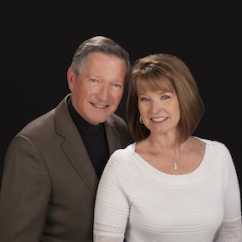Articles and News
Cash Flow Doesn’t Have to be a Rollercoaster Ride | May 01, 2019 (1 comment)

La Costa, CA—All too often, when socializing at the Las Vegas shows, we hear one jeweler ask another, “So, do you gamble?” Inevitably the response is, “Well of course! I’m in the jewelry business!”
Admittedly, cash flow can feel like a continual gamble, and worse yet, a roller coaster ride. There will always be ups and downs in cash flow, as there are in sales; however, much of it can be anticipated and, with proper planning, you can avoid the highs and lows on the "cash flow roller coaster." What makes for a fun ride at an amusement park is not fun when it comes to your business.
There are three primary ways to even out this ride. First, projecting sales more accurately, which in turn leads to anticipation of open-to-buy and payments. Ideally retailers should plan monthly sales by examining the previous year’s sales history, extracting large sales and focusing on predictable business.
Next, prepare for the anticipated rises and falls in cash flow and plan accordingly by making purchases and payments with a specific time-frame plan, not all at once. The monthly sales plan dictates your inventory level. As sales occur, inventory naturally goes down. The goal is to have inventory levels match off with anticipated sales. By anticipating sales and inventory, retailers can stagger deliveries as well as payments to hit when inventory is needed and not all at once.
Finally, always hold a reserve in your cash flow for special orders, memo sales, and fast sellers. These funds need to be readily available every month. Without intentionally holding dollars in reserve for this critical part of your business, you will feel like you never quite have enough--and may miss sales opportunities. Retailers can easily calculate what percentage of business is coming from stock versus special orders or memo. This percentage of sales (which is often in the 30% range) should be held out of the open to buy – knowing you will need these dollars for this area of business.
Naturally, first quarter is the best time to lay out your plan for the year. Cash flow is typically good coming out of the previous year's fourth quarter, and it’s the perfect opportunity to hit the reset button. But now that we’re halfway into the second quarter, if you have not already prepared your plan for the year, be certain to do so before attending the upcoming trade shows.
It is imperative when going on a buying trip that you have a set open-to-buy plan, including delivery and payment dates. Create an open to buy check book--a spreadsheet set up like a check registry works perfectly, or there are many templates available online. Your opening balance is your total open to buy. As you place orders, a deduction is made until the dollars are gone. At that point it is important to stop, or you will find yourself overbought, over inventoried, and with cash flow difficulties.
We recommend you write in the suppliers you are planning to work with, and pencil in the dollars you anticipate spending with them in advance. This makes sure you have funds set aside for the purchases you know you need. Additionally, a portion of your open-to-buy can be designated for new lines. If cash flow is tight, always replenish your fast sellers first, as these are proven winners. It’s important to keep your inventory mix fresh and have new lines to introduce, but large initial orders should be carefully planned for--including the advertising dollars to launch them--not something you do on impulse at the show.
Dan and Lori Askew of Vantage Group provide decades of expertise to both retailers and manufacturers in the jewelry industry. They strategically examine each area of business and address concerns in the order that will make the greatest impact in the most time efficient way, specifically with cash flow, merchandise planning, inventory control, advertising, and store management. www.VantageGroupinfo.com or 760-633-2959.







